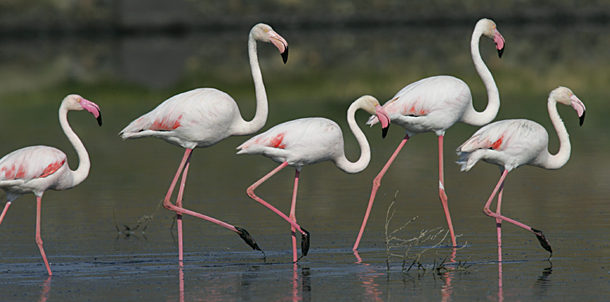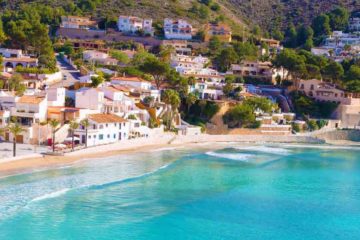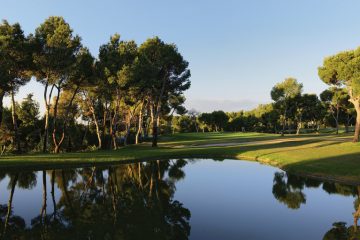Where to find the Flamingos
Undoubtedly you will already have spotted these graceful birds while discovering the Costa Blanca. It is nice to watch Flamingos, and they give character to the landscape, but what do we actually know about them?
Residence
Flamingos can be found both along the coast and in the interior of Spain. They don’t always stay in the same place either, but fly from place to place.
The flamingo loves shallow lagoons, mud flats and salt marshes. That is why they can often be admired on the Costa Blanca in the salt lakes. Especially the province of Alicante is popular with these cranes. The Salinas of Calpe, the Salinas de Santa Pola, El Hondo and the Salinas of Torrevieja are all attractive for the flamingos.
Appearance
In addition to a stylish pose, these birds also have a distinct colour and beak. The plumage is mainly pinkish-white, but the covert feathers on the wings are red with underlying black feathers.
The beak is rosy with a black tip and the long elegant legs are also pinkish in colour.
On average, a flamingo stands 150 cm tall and weighs about 3 kilograms.
Reproduction
Flamingos breed in colonies during the months of March, April and May. At the end of February, the birds start to prepare their nest. This is built with branches and mud and looks like a crater.
Each pregnant female only lays one egg, which is stored safely in the nest. The salt lakes are very popular breeding grounds, because there is often water around the nests. This way predators are kept at a distance.
After a month of incubation, the egg will hatch. Not much later the youngster has to learn to fly independently to follow the group to the next resting place.

Did you know that?
- The birds owe their colour to eating small shrimps and crustaceans?
- Flamingos have webbed front toes and therefore are good swimmers too?
- The beak is used to filter water? The sucked-up water is pushed back out with the tongue. In this way, the flamingo filters out food.





